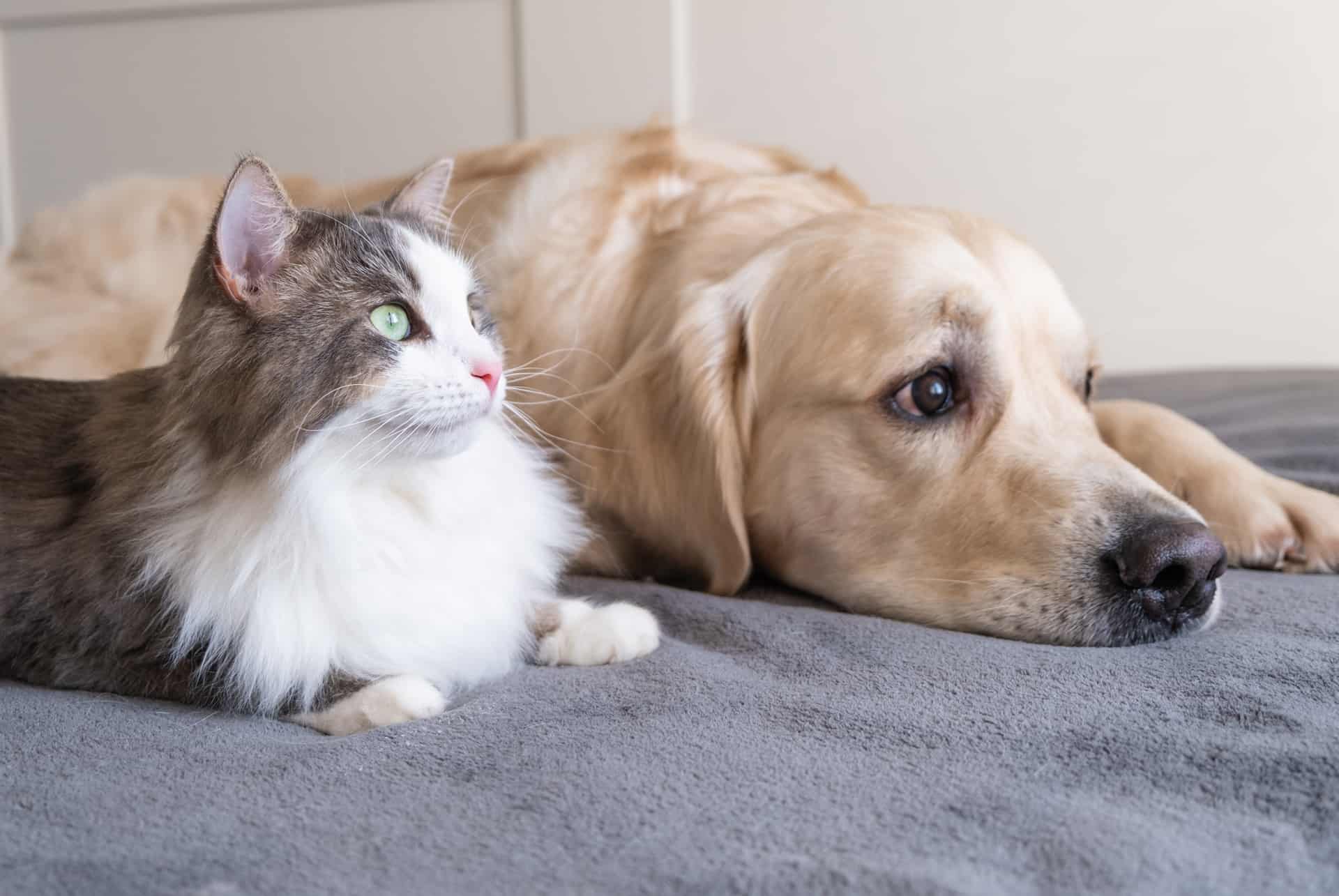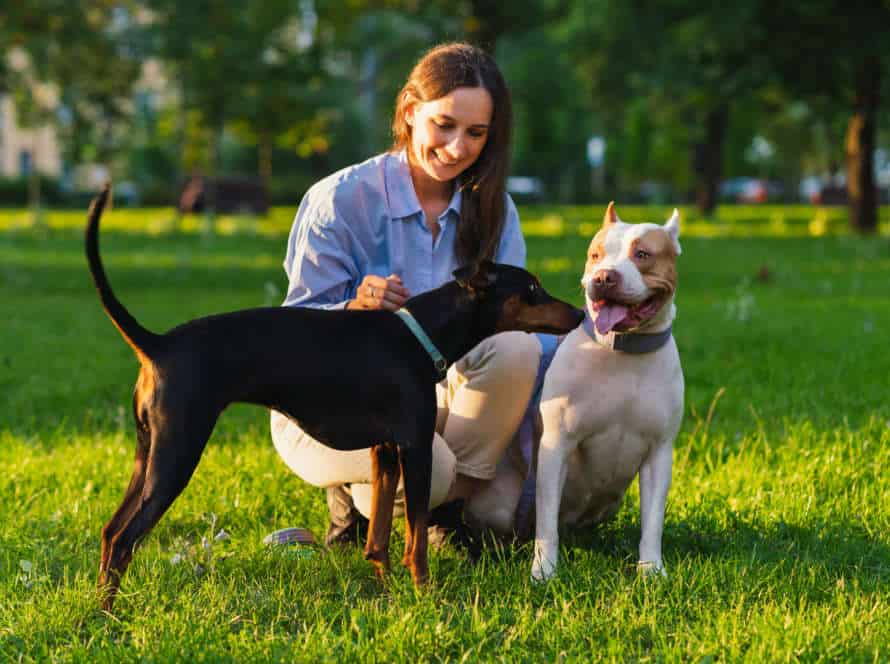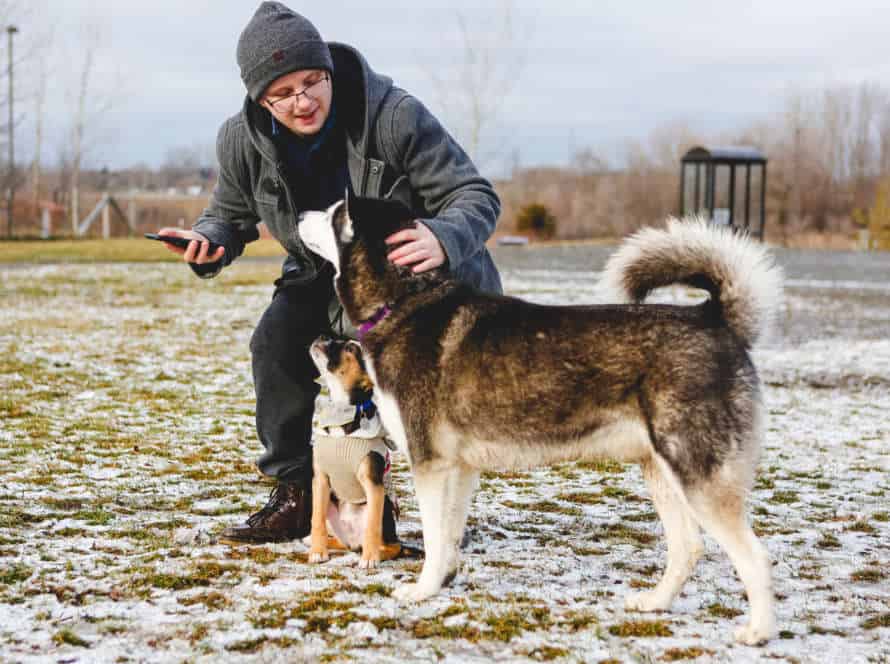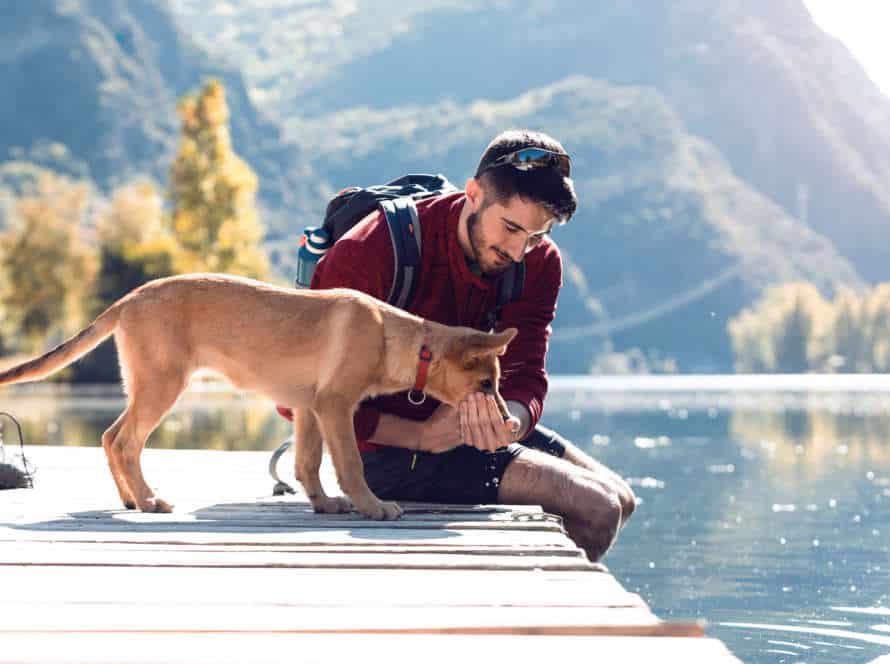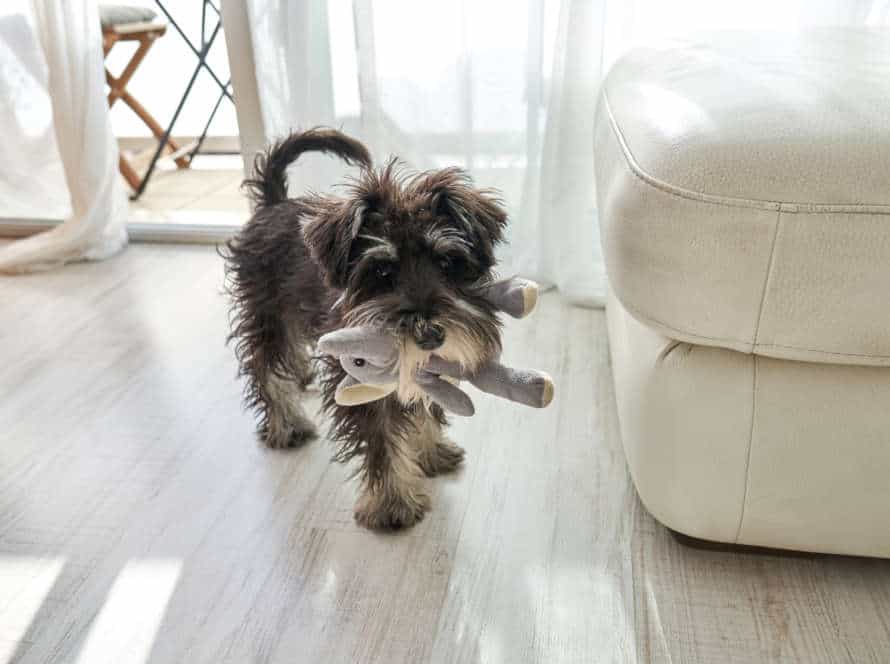Introducing Your New Dog to Cats: A Step-by-Step Guide
Introducing a pup to cats can be tricky. Here’s a guide to make it easier.
- Step 1: Prep your abode. Designate safe zones for both pets.
- Step 2: First meet up. Keep the pup leashed. Put kitty in a carrier. Keep it brief.
- Step 3: Supervised meet ups. Keep an eye on ’em.
- Step 4: Gradually increase time with each other.
- Step 5: Positive reinforcement. Treat them when they interact appropriately.
Pro tip: Ensure a successful coexistence with a routine and a calm setting.
Understanding the Importance of a Proper Introduction
Introducing a pup to your cats? Follow these steps!
- Comprehend the dynamics between dogs and cats.
- Create a secure, quiet and respectful environment.
- This will guarantee a smooth transition and a good relationship between your furry friends.
- Take your time and don’t rush it.
- And, you’re done!
The Risks of Introducing Dogs and Cats Improperly
Introducing a new dog to cats incorrectly can have bad outcomes for both pets. A proper introduction is very important. Reasons why:
- It safeguards: Cats are territorial and may feel threatened by a new dog. Without the right introduction, they could attack themselves or the dog.
- It supports good vibes: A suitable introduction can help cats and dogs link positive memories with each other, making a peaceful relationship.
- It avoids behavioral issues: An improper introduction can cause behavioral issues, like fear, biting, and aggression, in both animals.
Remember: A correct introduction is a key part to having a cheerful, healthy home with cats and dogs.
The Benefits of a Successful Introduction
Introducing a new dog to cats is key for a harmonious living arrangement.
Benefits of a successful introduction:
- Establishes trust. Helping pets feel safe with each other.
- Reduces stress. Rushed intro’s can lead to conflicts & bad behavior.
- Promotes socialization. Necessary for pets to get along & build friendships.
Pro Tip: Supervise during the intro & take it slow. Use positive reinforcement to reward good behavior.
The Role of the Owner in the Introduction Process
Introducing a new pup to cats is key. The owner has a huge role in making it a successful and safe experience. Here’s what the owner should do:
- Plan the environment – make a place cozy and secure for both the dog and cats.
- Be around during the introduction – watch the pets closely and intervene if needed.
- Begin with controlled, short introductions – let the animals get used to each other’s smells before physical contact.
- Reward great behavior – give both pets compliments and rewards for being peaceful and friendly.
A good introduction can make a lifelong bond between the pup and cats. As the owner, be patient, relaxed and attentive during the introduction. It might take some time for the pets to get used to each other, but with the right guidance, they can live together happily.
Preparing for the Introduction
Introducing your new dog and cats? Crucial! To avoid fights, size, energy, and past experiences must be considered. Here’s a guide to help. With the right prep, your furry family can live in harmony. Follow these steps for a smooth transition:
- Prepare a separate space: Set aside a separate area for your new pet to stay in while getting used to the house and for your current pets to get used to the new smells and sounds.
- Allow for scent swapping: Swap scents between your new and current pets. Swap blankets or towels or other items that have your pet’s scent on it, like bedding, toys, or a collar. This will help them to get used to each other’s scent before actually meeting.
- Supervise first interactions: For their first interactions, keep them on a leash or a carrier, and do not allow unsupervised interactions until they are comfortable being together.
- Gradually introduce: Slowly, over time, allow them to be in the same area. If they’re comfortable together, give them treats and positive reinforcement. Make sure to give your current pets extra attention so that they don’t feel neglected.
- Watch for warning signs: Be alert for signs of aggression, fear or anxiety, and break up any fights immediately. Keep things calm and positive.
Assessing Your Dog’s Personality and Training
Before introducing a dog and a cat, it’s important to assess the dog’s character and training. Here are some points to consider:
- Temperament: Different breeds of dogs have different personalities. A calmer, gentler dog is more likely to get along with cats.
- Training: Is your dog trained in basic commands? Dogs that obey commands are easier to manage.
- Pre-existing behavior: Has your dog shown aggression or a prey drive towards small animals? If so, address it before introducing a cat.
When introducing them, keep your dog on a leash. Let them both retreat to safe spaces. Reward good behavior to help build a positive relationship.
Preparing Your House for the Introduction
Introducing a dog to cats can be tough. But, with the right steps, it can be made easy! Prepare your home for the introduction. It is key for the safety and comfort of both your cat and your new pup. To help you:
- Give your cat a cozy bed, litter box, food, and water bowls.
- Let your cat explore the room and smell the new doggo’s stuff.
- Put a baby gate in the doorway.
- Swap toys and blankets between the two animals, so they can get familiar with each other’s scents.
- Monitor the pets when you introduce them. Separate them if needed.
These steps will help the intro process and make sure your cat and new dog coexist peacefully.
Preparing Your Cat for the Introduction
Before introducing your pup to your resident cat, take steps to prepare them and avoid any stress.
- Create a secure spot for your cat to retreat.
- Introduce new scents like the pooch’s by leaving a blanket with its smell in the safe space.
- Maintain your cat’s routine, including mealtimes and playtime, to reduce anxiety.
- Use a pheromone spray or diffuser to keep them calm during the introduction.
- Once they’re comfortable with each other’s smells, introduce them in a neutral space (leash the dog).
Pro Tip: Always monitor their interactions in the first few weeks and be patient. It could take some time for your pets to become buddies.
The Introduction Process
Introducing a pup to cats can be daunting. Cats and dogs have the potential to be buddies. But the introduction must be done carefully, and with patience. No worries though! There are steps to help them become familiar. Here’s what you can do to introduce your dog to cats the best way:
- Start by keeping your cat in a separate room. This will give both of them time to adjust to the new smells and sounds.
- Let your dog sniff around the cat’s room while the cat is not there. This will help him get familiar with the cat’s scent.
- Once you think your dog is getting comfortable with the new scent, let the cat explore the rest of the house while the dog is not present.
- Next, let them see each other from a distance – this could be through a baby gate or cracked door. Always supervise the interaction and never leave them alone.
- If all goes well and they seem calm, allow them to be in the same room while still supervised. Gradually increase their time together until they are comfortable around each other.
The First Introduction: Visual Contact
The intro between a new pup and kitty is key for their future bond. Visual contact is the beginning. Follow these steps:
- Hold the pup on a leash and bring them into the room where the cat is.
- Let the pup come close and make eye contact, but not physically interact.
- Check both animal’s body language for fear or aggression signs.
- Do this daily and gradually let them spend more time together.
Remember, the introduction process can take time. Be patient and attentive to make it peaceful between the pup and kitty.
The Second Introduction: Scent Control
Scent control is a must when introducing your doggy to kitties. Use these tactics:
- Exchange bedding to introduce scents
- Swap toys between animals to get familiar
- Use calming pheromone sprays or diffusers
When they both get used to the scents, gradually introduce them. Patience and consistency are essential! It could take weeks or months to adjust. Don’t rush it.
The Third Introduction: Controlled Interaction
The third stage of introducing a new pup to cats is Controlled Interaction. Supervise it and make sure it goes smoothly. Here’s how:
- Put your dog on a leash and let your cat into the same room.
- Give your cat the choice to approach the pup.
- Make the initial interaction short and sweet.
- Reward good behaviour from both, and gently correct any that isn’t wanted.
- Do this for a few minutes each day, increasing the duration and closeness of the interaction.
- Always supervise and be ready to intervene if needed.
With patience, consistency and encouragement, your dog and cat will get along in no time!
Managing the Post-Introduction Period
Your pup and kitty have met – that’s the first step! Now, you must watch them closely so their relationship is good. Encourage the behaviors you like, and discourage the ones you don’t. Set rules for both pets and reward them when they do well. With a bit of help, these two can live in harmony in your home!
Monitoring Your Dog’s Behavior
Monitoring your pup’s activity is a must when bringing cats into the home. The post-introduction time is vital for managing their behavior. It’s imperative to offer them time to get used to the new surroundings and other housemates.
Here are some clues to help manage the post-introduction period when introducing your new dog to cats in your home:
- Keep the pooch leashed during the initial monitored meeting with the cat to avoid chasing, hunting or fixating behavior.
- Praise your pup for good actions with the cat, like staying calm and avoiding the cat.
- Check your dog’s behavior and body language around the cat, eying out signs of hostility or fear, such as snarling or flashing teeth.
- Slow introductions are key – supervise all dog-cat interaction, and give both pets different spots they can rest at if they need some time to themselves.
By following these steps and tracking your pup’s behavior, you can successfully introduce them to cats in your home, keeping their safety and wellbeing in mind.
Pro Tip: Remember to provide your pets plenty of positive reinforcement and love during the introduction period, and never punish or scold them for negative behavior.
Monitoring Your Cat’s Behavior
Cats can show various behaviors when a new dog joins the home. Keeping an eye on your cat’s behavior is critical for a peaceful relationship between your pets.
Here are some behaviors to watch for:
- Hissing, growling, or swiping at the dog: This could mean your cat feels threatened and needs more time to get used to the situation.
- Hiding: This is typical for cats who feel scared or overwhelmed by the new dog.
- Licking or grooming the dog: This is a great sign that your cat is starting to accept the new pup.
- Playing or cuddling with the dog: This means your cat feels secure and trusts the new dog.
Pro tip: Give your cat some space, attention, and positive reinforcement during the post-introduction period. This can help them feel more secure and reduce any negative behaviors.
Managing the Adjustment Period
It’s essential to manage the adjustment period when introducing a new pup to cats in the house. Here are some tips to help:
- Give each pet their own area. Rooms or safe places will do.
- Always supervise interactions between them.
- Reward good behaviour with treats, compliments and playtime.
- Be patient – don’t rush them.
With these tips, you can help your pets live in harmony.
Troubleshooting Potential Issues
Introducing a dog to cats? Be prepared for issues. Even if you’ve prepped them for the meeting, it’s not certain they’ll get along. Here’s how to fix potential problems: Troubleshoot.
Signs of Aggressive Behavior
Aggressive behavior in dogs can be tough to manage. It can even put cats in your home at risk. Here are some signs to watch out for:
- Barking or growling – Your pup may bark or growl to signal a perceived threat.
- Snarling and showing teeth – To warn, your pup may show their teeth or snarl.
- Lunging or chasing – They may lunge after or chase other animals, including cats.
- Stiff body posture – An aggressive dog may hold their body stiffly, with ears up and forward.
If you spot any of these signs, you must take action quickly. This could protect you, your furry friends, and others from harm. For help, get the advice of a professional trainer or vet.
Tips for Dealing with Aggression
Let’s introduce your new pup to kitties! It can be tough and aggression can be a problem. Here are some tips:
- Go slow – Let ’em sniff each other with no contact. Increase their time together gradually.
- Keep ’em apart – Until you’re sure the pup won’t hurt the cat, separate them when you’re not around.
- Use positive reinforcement – Give treats or praise when the pup is calm and nice with the cat. This will stop aggression.
- Get professional help – If introducing them is too hard, or aggression doesn’t go away, ask a trainer or behaviorist for help.
Follow these tips and you’ll create a peaceful home for both animals!
Red Flags: When to Consult a Professional.
Introducing a new pup to felines can be tricky. If problems arise, consulting a professional may be essential. Here are some signs to watch out for:
- Aggressiveness: If your dog growls, barks, or lunges at your cats, get help right away.
- Fear: If your pup is scared or anxious and won’t come near them, a pro trainer can help desensitize your dog.
- Predatory Instincts: Some dogs have strong prey drives and may view cats as prey. If this happens, a pro can help.
- Trauma: If either your dog or cats have been through trauma, talk to an animal behaviorist before introducing them.
Safety is key when introducing them. Professional help is always available if needed.
Frequently Asked Questions
1. How can I introduce my new dog to my cat?
The best way to introduce a new dog to a cat is to do it gradually. Start by keeping them in separate rooms and swap their belongings, like blankets or beds, so they can get used to each other’s scents. Next, let them see each other through a crate or baby gate before allowing them to interact closely. Always supervise their interactions and praise them when they are calm and behaved.
2. How do I know if my cat and dog will get along?
There is no guarantee that your cat and dog will become best friends, but there are some signs that can indicate a positive relationship. Look for body language like relaxed posture, wagging tail, and playful gestures. Note that dogs that show a lot of predatory behaviors like chasing, barking or growling at the cat should be closely monitored.
3. What should I do if my dog shows aggression towards my cat?
If your dog shows aggression towards your cat, take a step back and return to the introduction process. Keep them separated again and use positive reinforcement training to teach your dog to stay calm and relaxed around the cat. You may need to consult a professional trainer or behaviorist to help with this process.
4. How can I supervise my dog and cat together?
Supervising your dog and cat when they are together is important to ensure their safety. Use a leash and collar or a harness to keep your dog under control. Never allow them to be alone together until they have established a positive relationship. Gradually increase their time together.
5. Can puppies and kittens get introduced to each other?
Yes, puppies and kittens can be introduced to each other, but it’s important to supervise their interactions closely. Puppies are often playful and can accidentally harm a kitten with their roughhousing. Make sure to provide a safe environment and give them plenty of space to explore and play.
6. How long does it take for a dog and cat to get along?
The amount of time it takes for a dog and cat to get along can vary. It may take days or weeks, depending on their personalities and past experiences. Be patient and allow them to acclimate to each other slowly. With proper training and socialization, they will eventually learn to coexist peacefully.

